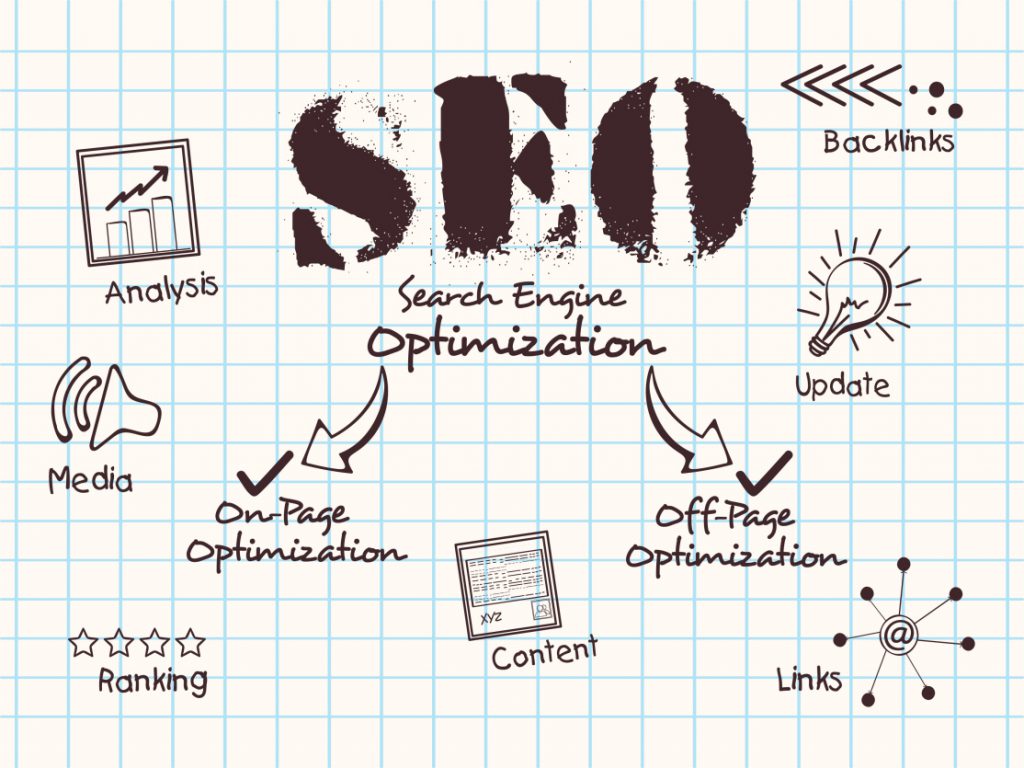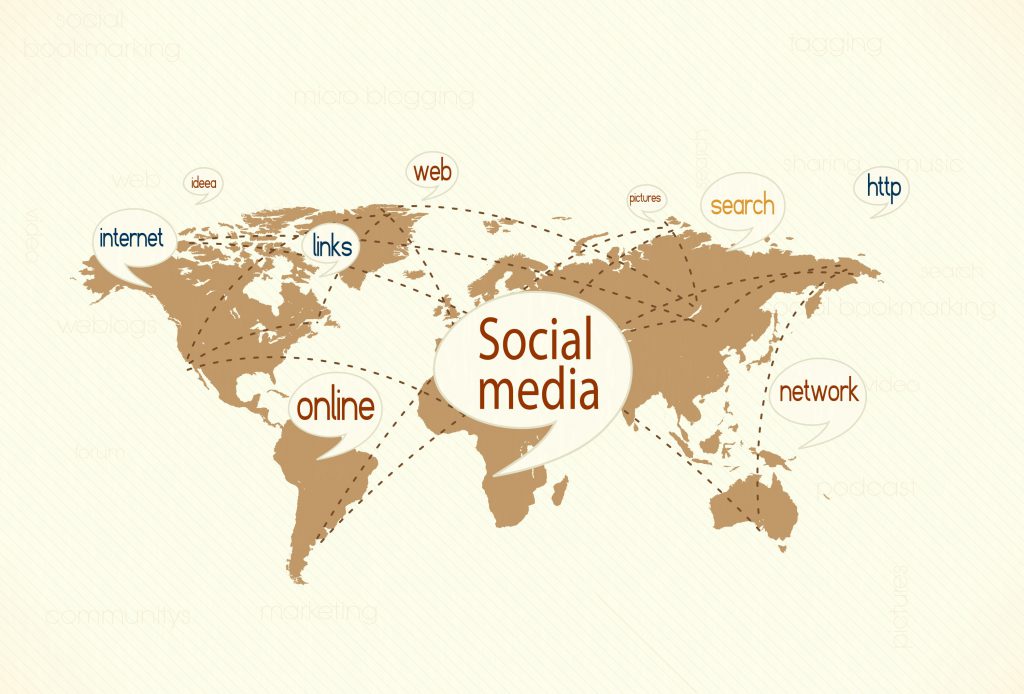
As you begin to build your professional property management website a key component of your new online marketing strategy is making your website easy to find on the Internet. To do this, you need to effectively position your brand in search engine results like Google; this strategy is referred to as SEO, Search Engine Optimization, and is as important as creating your website.
Imagine all the effort you spent inputting content to make your website look beautiful and attract the right renters, only to have it all go to waste because people can’t easily find you online. The good news is, there are simple and effective ways to boost your visibility online in search results, while simultaneously improving related marketing efforts with social media and rental advertising.
This article provides guidelines as a starting point to begin your SEO for your property management website. SEO requires constant monitoring to ensure your website stays visible in search results, as long as you take simple steps regularly you should not have a problem maintaining your position online. It takes a little more work up front and will continue paying off into the future of your business.
To fully understand the point of your SEO needs, effort and results, let’s set up a relatable scenario.
Imagine you own a rental business in Portland, OR. You want renters in Portland to find your website when they enter this search term into Google “available rentals in Portland, Or” or “property managers in Portland”.
When an online searcher attaches a specific city or location to a search query the page that pops up on the search engine ranking page is called the Local Search Results.
Goal: Get listed for Portland, OR local search engine results.
Your website’s content contains the most important information for letting Google know your relevancy to the search query.
Here are things to do optimize your website content:
One of the best ways to boost local SEO is to ensure the availability and consistency of your business’ listing information across third-party sources. Google and other search engines constantly scan these sites to develop a stronger understanding of your business and location.
If your business isn’t listed or the information is incomplete or inaccurate, you risk diminishing the value of how your business is ranked on search engine results.
Here are things to do to take control of your local business listings:
Links that point towards your website or direct people away to other related content play an important role in your SEO strategy. Relevant links to and from your website establish authenticity and credibility to your website and show search engines how you relate to the location and industry you are trying to rank for. Make sure you only focus on links that are relevant to your industry as to not damage the credibility of your website.
Here are actions to take to ensure a good link strategy:
User reviews build your business’ reputation in the industry, influence buying decisions and also help with SEO. Engaging with your online reviews, whether positive or negative, provide SEO benefits by showing your activity and relevancy online

Social media is becoming a vital role in modern day marketing. Since social media is already an online platform, you need to attach your new website to your social media accounts. Social media platforms like Facebook, Twitter, Google Plus, Instagram and Pinterest are a great way to be found online and engage with your potential renters and audience.
As you will see, a lot of SEO requires a big effort up front to design a website with relevant copy and content related to your location and industry. After a website is created, in order to appear high in local search results you need to engage with your residents on review websites and seek available links to and from your website.
SEO is an important part of any business’ marketing strategy. We will continue to provide helpful articles and SEO tips specific for property managers and landlords so your business can stand out online and attract the best renters.
Credit to Kaycee
Kaycee manages marketing and media relations for Rentec Direct, bringing a unique perspective to the world of property management and proudly shares industry news, products, and trends within the community.

If you don’t have an A/C unit, want to keep your electricity costs down, or simply don’t trust your property’s outdated cooling system to work efficiently, we’ve put together the top simple and affordable tips for keeping your house cool this summer.

Credit to Kaycee
Kaycee manages marketing and media relations for Rentec Direct, bringing a unique perspective to the world of property management and proudly shares industry news, products, and trends within the community. More from this author.

Online reviews aren’t just for restaurants; they are equally useful for real estate marketing. They also happen to be Kimberly Sethavanish’s secret weapon.
Sethavanish, a salesperson at Century 21 Alliance in Santa Rosa, Calif., has gained three listings from clients finding her positive reviews on Yelp. After each transaction, Sethavanish asks her clients to share their experience with her services and, for the most part, they are happy to help. And best of all, these highly persuasive online reviews are free.
“If you’re not putting yourself out there, you’re not able to be found. That’s worse than anything else,” says Sethavanish, a member of REALTOR® Magazine’s 2016 class of 30 Under 30.
For this year’s 30 young entrepreneurs, technology and online tools are a way of life in their business, keeping them connected to clients and organized at the office and helping to smooth out any bumps in the road to a successful transaction.
We asked a few of the 30 Under 30 honorees to share the tech tool that keeps them on track. Here’s what we found:
In addition to online reviews, Sethavanish is also a fan of DocuSign because it helps cut the response time in her hot seller’s market. “I’ve seen it make or break a sale,” she says. “With DocuSign, you can get your counteroffer in before someone else does.”
Several other 30 Under 30s also attest to the benefits of electronic signatures.
Shari Anhorn, CRS, GRI, team member and broker-owner at Brokers 12 Inc. in Minot, N.D., has been using DocuSign, a REALTOR Benefits® Program partner, since 2011, putting her among the first agents in Minot to use electronic signatures.
“This is rural North Dakota, and to be able to have a seller or buyer who is two hours away sign a document from afar is tremendous,” she says. What’s more, many of her clients are military personnel who have to purchase property sight unseen, and DocuSign has eased the process, Anhorn says.
But some 30 Under 30 members are careful not to assume every client knows how to use even the most basic technology.
The market that Diego Espinoza-Martinez, salesperson with Keller Williams Realty-Tulare in Visalia, Calif., serves is largely agricultural and heavily impoverished. While he uses DocuSign with some clients, it’s not always appropriate, he says. Instead, Espinoza-Martinez takes the time to learn his clients’ comfort level with technology and then decides on the appropriate tools for the transaction.
Another tool for going paperless is Genius Scan, available through both the App Store and Google Play. Wade Corbett, CRS, GRI, salesperson with Keller Williams Realty in Raleigh, N.C., is an avid user. “I scan a business card and import it into my database. That way, I don’t have to carry around a bunch of cards,” he says.
Genius Scan can be used to scan forms, receipts, or a multitude of other real estate documents from your smartphone. Save the images as PDFs and email them on the go. You can also export the files to your cloud service of choice, such as Dropbox or Google Drive.
Alexander Parker, also a 2016 30 Under 30 honoree, creates property folders in Dropbox for his clients, where they can share pictures, maps, and other relevant documents. Parker, salesperson with Lord & Stanley Realty in Tallahassee, Fla., is also rarely without his iPad so that he can access files anywhere and look them over with clients in the field.
In San Diego, Sarah Davis, SRES, broker owner of Davis Estates, takes her Surface Pro tablet to every client meeting. “I can take it to a showing and the buyers can sign a purchase order and send it to the listing agent while we’re still in the house,” she says. In California, agents are required to give a copy of the contract to the signer at the time it is signed, so she emails a copy to her clients directly from her tablet.
For software, she uses Microsoft OneDrive for Business, a secure cloud service, for all her transaction files. “It’s safer than email, and if my computer dies, everything is still in the cloud,” Davis says.

Connie Chung, salesperson with Vanguard Properties in San Francisco, considers herself old-fashioned when it comes to staying in contact with her clients. She prefers dinners and coffee meetings over informal emails. “I can see their facial expressions, hear the tone of their voices, and have them hear mine,” she says.
And when a client needs more attention — when they’ve expressed unhappiness with a property or have an issue that needs to be resolved — Chung says that writing an email is the last thing you should do. “I find it simplifies my life if I pick up the phone, so I can really hear where they are coming from and ask if we can meet for coffee,” she says. “A lot of times, meeting face-to-face takes away any discomfort for both parties.”
On the social media front, she engages with clients and her sphere predominantly through Instagram. “Recently, I was touring a new development. It was great to wear a hard hat and neon vest and post behind-the-scenes photos that a lot of people don’t usually get to see,” she says.
Corbett describes his database as the core of his business, so he uses Brivity, a cloud-based CRM, to stay in touch. “It helps me follow up better and makes me able to utilize my time better,” he says.
Honoree Rebekah Eaton, associate broker with RealtySouth-MB-Crestline in Birmingham, Ala., is always looking for meaningful ways to stay connected to her sphere. So she recently started using BombBomb, a service that helps users produce video greetings that can be shared via email or text. “I take a little time to record a short video saying, ‘Thinking about you.’ And then I send it on. Bam.”
Scott Steadman, a Windermere Real Estate agent in Draper, Utah, uses his real estate blog to tell the story of his clients. “I talk about the family who spent years gathering around the fireplace for birthdays and holidays, and how that room was the place where they felt whole,” Steadman says. “Pairing posts like that with social media always gives my followers a reason to come back to my website for more info.”
Consistency is also key, Steadman says, so he rarely lets more than a few days separate his posts, which cover everything from market trends to before-and-after renovation photos.
Brittany Barsky-Allison, team member with Wydler Brothers in Bethesda, Md., focuses on promoting her business on Facebook in a “fun, organic way.” She creates an advertising campaign for every one of her listings, and she often posts pictures with clients or of homes she’s toured on her personal and business pages. She celebrates each closing with a status update and is frequently “liking” and commenting on her friends’ statuses and photos.
“This has helped me to pick up referrals and create a sense of expertise amongst my peers,” she says. “Brokerages must continue to place more emphasis on the people in the real estate industry and recognize that people buy homes, not computers, robots, or smartphones. Technology strengthens our industry, but people are at the core, and we cannot forget that simple fact.”
Barsky-Allison uses Salesforce.com to track her pipeline and communicate with her sphere of influence. She sends out weekly and monthly emails as well as monthly market updates, and acknowledges the buy or sell anniversaries of her clients by sending a note or gift.
Customer service is a top priority for honoree Jessica Bean, salesperson with Century 21 Price Right in Lewiston, Idaho. That’s why she arms herself with data from NAR’s Realtors Property Resource® before every marketing or listing presentation.
“It’s one of the most integral pieces of my business,” says Bean, who will compare RPR’s detailed reports against her own research on comps as well as the assessed value of a property. The reports also help her make the case that presale updates can make a listing much more attractive.
Bean also notes that RPR can help her craft a competitive offer in the seller’s market that currently defines much of her area. She uses it to help buyers put themselves in sellers’ shoes, explaining how she’d use the RPR data to price the home if she were the listing agent on the property. And finally, Bean loves the fact that she can pull RPR up on her phone on the go: “I literally use it every day in my business. Man, it’s a lifesaver for me.”
Credit to Erica Christoffer
Erica Christoffer is a consulting editor for REALTOR® Magazine.
Adults spend more time in their bedroom than in any other room in their house. But you wouldn’t know it from the home sales process. Buyers and sellers alike often pay more attention to kitchens, master bathrooms, closets, and yards than they do to this vital space where they will usually spend more than a third of their 24 hours each day.
“Who spends that kind of time in the kitchen?” asks sleep expert Nancy H. Rothstein, founder of The Sleep Ambassador in Chicago, a source for education, consulting services, and resources that optimize healthy sleep.
Yet more attention is being paid to the importance of getting adequate sleep, from high-profile advocates like Arianna Huffington, who recently published her book, The Sleep Revolution: Transforming Your Life, One Night at a Time (Harmony, 2016), to medical professionals. “Fewer than six hours [a night] can lead to diseases — a higher rate of diabetes, obesity, cardiovascular problems, and even shorter life spans,” says Dr. Susheel Patil, clinical director of Johns Hopkins Sleep Medicine in Baltimore.
While there’s no magic figure for the amount of sleep one should get, Patil suggests adults try for seven to eight hours on average. Dr. Michael Breus, a board-certified sleep specialist in Los Angeles known as The Sleep Doctor, uses his household as an example of the variation. “I need between 6 1/2 and 7 hours while my wife needs between 8 and 8 1/2,” he says.
Buyers and sellers alike should strive to furnish a master bedroom that contributes to high-quality sleep. Updating or remodeling the room offers another benefit, says certified color consultant Michelle Mohlere, a salesperson with Gibson International in Los Angeles. A nicely designed bedroom is likely to bring in more money at resale than one without these touches, she says.
Sellers looking to better stage this room will also gain from the following six steps:
1. Stage the bed in a choice spot. Connecticut architect and author Duo Dickinson prefers the bed be set away from the room’s entrance to keep it out of the main circulation path. Kathryn Baker, vice president of design services with Polaris Pacific, a real estate sales and marketing firm in San Francisco, likes to place a bed in a spot so occupants can enjoy the best view — whether that’s inside (maybe toward a fireplace or favorite piece of art) or outdoor (with views of trees or water where possible). Chicago designer Michael Del Piero suggests pairing a bed with an upholstered headboard for those who like to sit up in bed and read; she dresses up the bed with decorative pillows, a duvet, and a throw to personalize it and make it more welcoming to tuck in for sleep.
2. Install the right window treatments. Minimal is the design mantra when it comes to much of the standard room décor today. But while no coverings in some rooms, such as kitchens and living rooms, allows in more light and views, some amount of treatment in a bedroom is needed to block outside light and provide privacy. Del Piero likes to use a blackout shade behind a transparent shade or drapes or a woven wood shade with blackout drapes. Baker favors motorized shades to make opening and closing a task that can be performed from the bed or set by a timer.
3. Use the right lighting. Dickinson discourages installing recessed cans since they chop up a ceiling and aren’t attractive to look at while in bed. He prefers task lighting from lamps on night tables or wall-mounted sconces. Michigan designer Francesca Owings likes hanging one decorative fixture in a ceiling’s center for an aesthetic punch. Sensitive sleepers might appreciate the new Good Night Biological LED bulbs that claim to help regulate a body’s natural circadian rhythm through the production of the hormone melatonin, which helps control sleep and wake patterns, says Breus.
4. Conceal or banish electronics. For years, scientists and health professionals have known about the danger of the blue light that comes from certain electronics equipment and adversely affects melatonin production, says Patil. But only recently have they suggested that you can enhance unwinding and falling asleep by turning off TVs, smartphones, and iPads at least an hour before bedtime. Shutting them off also helps train the brain that the bedroom is primarily a place to sleep rather than stay awake, Patil says. If the temptation is too great, home owners might consider making the master bedroom a no-electronics zone. Baker’s company furnishes model bedrooms in its residential projects without TVs and other electronics technology to demonstrate this idea. “People have responded favorably, and some put TVs in a second bedroom or home office” instead, she says.
5. Pick a soothing palette. Of course, color is a personal preference, but color experts can offer guidelines. “You can’t say one is soothing for all and will make a person feel calm,” says Jessica Boyer, a Chicago designer with Susan Fredman Design Group. Sue Wadden, director of color marketing for paint manufacturer Sherwin-Williams, says colors that aren’t extreme are more restful. “They’re neither too bold, dark, bright, or intense. Rather, soft and calming,” she says. Designer Kimba Hills of Rumba Style in Los Angeles prefers a palette of pale blues, greens, beiges, grays, and whites for the bedroom. Boyer also likes to bring in bedding in white and light creams because she finds they’re calming. “It’s the equivalent of sleeping in a cloud with nothing to distract me. What’s important isn’t what’s trendy but nurturing,” she says.
6. Add creature comforts. If the room’s size allows, consider adding a chaise, chair and ottoman, and night tables. Also, a large area rug or wall-to-wall carpeting can help deaden noise and provide warmth underfoot, says Owings. If the room is located so it opens directly to the outdoors, play this up. Mohlere says real access to bucolic scenery can contribute to a sense of tranquility even more than just viewing the outdoors can. If outdoor access isn’t possible, check to see that windows are operable for fresh air. Other amenities worth considering: a gas- or log-burning fireplace for coziness, artwork for eye candy, and good storage for tidiness. “Too much clutter is distracting,” Rothstein says.
At the end of the day — or the beginning of a new one — real estate pros can emphasize the master bedroom as one more “fabulous room where you spend time in your new home,” Rothstein says.
Barbara Ballinger is a freelance writer and the author of several books on real estate, architecture, and remodeling
New Star Realty & Inv.
Real Estate